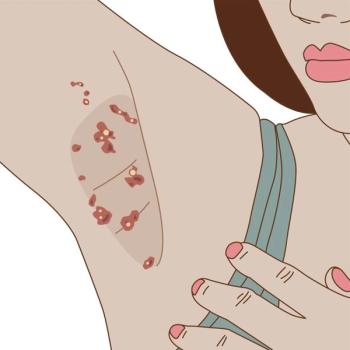
Congenital Sensory Neuropathy Type IV (Congenital Insensitivity to Pain with Anhidrosis)
A 6-year-old girl presented with a huge ulcer on her right heel, seen here, that began as a minor laceration when she stepped on a rock several months earlier. On the left heel, there was a similar lesion in the process of healing that had also followed a minor injury. Her feet and hands were dry and hyperkeratotic.
A 6-year-old girl presented with a huge ulcer on her right heel, seen here, that began as a minor laceration when she stepped on a rock several months earlier. On the left heel, there was a similar lesion in the process of healing that had also followed a minor injury. Her feet and hands were dry and hyperkeratotic.
The patient had a history of frequent injury with few or no complaints of pain, including a serious fracture of the femur requiring open reduction and internal fixation that was not diagnosed for several weeks after the initial injury. As an infant, she demonstrated extremely unusual oral self-mutilating behavior, causing recurrent oral ulcers and avulsion of most of her deciduous teeth. She had two febrile seizures in the absence of any evidence of infection or illness, and her parents noted a reduced ability to sweat. In hot weather, they regularly administered acet-aminophen to prevent further seizures.
Congenital sensory neuropathy type IV (congenital insensitivity to pain with anhidrosis) is characterized by the absence of perspiration (despite the presence of normal sweat glands), episodes of recurrent fever, diminished sensitivity to hot or painful stimuli, recurrent injury, self-mutilation, and developmental delay. Ultrastructural and morphometric studies of the peripheral nerves demonstrate the absence of unmyelinated fibers and a significant reduction in the number of small myelinated fibers, accounting for the absence of pain and temperature sensation. Anhidrosis can be explained by lack of innervation of the sweat glands by these fibers.
This neuropathy is an autosomal recessive developmental disorder produced by mutations in the gene for a tyrosine kinase receptor for nerve growth factor.
Newsletter
Enhance your clinical practice with the Patient Care newsletter, offering the latest evidence-based guidelines, diagnostic insights, and treatment strategies for primary care physicians.


















































































































































































































































































